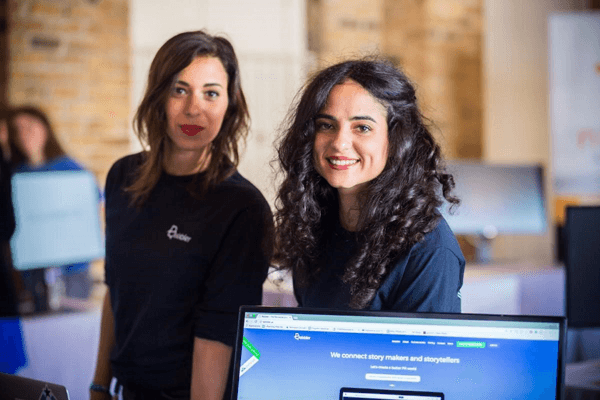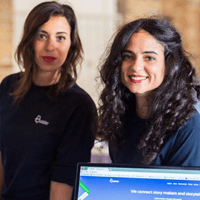Accelerated Design

Editor's Note: After spending four months participating in Techstars, Hannah Oiknine, co-founder of Babbler, realized what most startups are selling is an experience. Let's hear about her journey.
Startups are about finding a problem that needs fixed, and Babbler changes the way public relations gets done by connecting companies with relevant reporters. Even with a strong idea, startups join funding and mentoring networks like Techstars for a variety of reasons.
Babbler completed Techstars accelerator in Austin in May 2017 and decided to join this journey in order to:
+ Get constructive criticism; and get out of our comfort zone.
+ Solve the problem faster by having access to the Techstars network and accelerator program (5,000-plus founders, mentors and investors worldwide)
+ Learn how to scale the business and automate sales and customer service management by exporting the software as a service in a foreign and huge market: the United States.
One primary lesson (more below) is a take on LinkedIn Co-Founder Reid Hoffman's popular quote: "If you are not embarrassed by how na‚àö√òve you were six months ago, you are not learning fast enough."
During the first month at Techstars, Babbler started with the "Mentor Madness;" where we meet with a mentor every 20 minutes for 20 days. It is not an elevator pitch but a marathon pitch, as founders spend 20 minutes with each of them: spend five minutes pitching and 15 minutes getting feedback. In less than three weeks, I met with around 110 mentors total.
Gathering more than 250 feedback items from killers in different domains (e.g., marketing, tech, product, finance), it was time to recognize patterns. They all agreed that we found out a real problem to solve: public relations is broken, reporters are spammed with wrong press releases and companies spend hours trying to get answered and hoping to get featured, but our solution was not delivering its promise yet because of a poor user experience (UX) and user interface (UI) as well as an industry with strong traditional behaviors. In other words, if users waste hours understanding how a product works, founders will make the process longer and trickier even if the product is made to save time if used correctly.
These are just some of the lessons we learned, but five additional ones stood out.

(Sarah Azan (left) and Hannah Oiknine (right) are sisters and co-founders of Babbler.)
Lesson #1: Stop selling products and start selling the experience.
Whatever a product does, technologies exist to make humans' lives: easier, faster and smarter. For example, people use ride-sharing apps like Lyft and Uber rather than regular cabs because the driver arrives quickly, they do not have to pay by cash or credit card before exiting the vehicle, and they know in advance how much the trip will cost and who the driver will be. In this scenario, there is no reason to go back to regular cabs. When something is easy to use, people continue using it. This is the often spoke about "experience" of a product.
If the experience is worth it, people change their behavior (something that is traditionally difficult to do) with no friction. The solution to the problem startups are trying to solve in their industry has to not only be evident, but also easy to understand to ensure a quick and effective adoption. Startups cannot help people change a behavior or introduce a new use-case in a market if the experience is more difficult or longer during the onboarding process. Startups and the designers and developers they employ have to make things simple to get their product adopted quickly and save precious resources.
Martin LeBlanc, Founder and CEO of Iconfinder once said, "A user interface is like a joke. If you have to explain it, it is not that good."
This sentiment is why UX is key, if startups want to sell. From the simplicity of onboarding to the user interface and navigation. As Uber Founder Travis Kalanick (company culture withstanding) is fond of quoting:
"Uber is efficiency with elegance on top. That's why I buy an iPhone instead of an average cell phone, why I go to a nice restaurant and pay a little bit more. It's for the experience."
For Gary Vaynerchuk, businesses are selling an experience in which the client saves time and/or gets more convenience:
"In a marketplace of distraction, the company's, products and services that can save you time, are going to win. That is why Amazon is a market leader. That is why Prime Now wins. They have simplified the process of buying and selling. They have saved you enormous amounts of time." 
(Oiknine and Azan with their Techstars class.)
Lesson #2: Focus on what matters to your users and set up clear KPIs to achieve.
What do users want? Startups and their design and development team need to focus on one problem to solve, linked to 2-3 features maximum and execute them perfectly. Be very good at one thing, make it right and users will start using it. While redesigning the UX of Babbler's key features, we removed the ones that were not the most used and implemented VueJS as a front technology to align design, experience and performance.
In Babbler's case, each side of the marketplace has its own expectation of the product: companies want to connect with reporters and get featured; reporters want to access targeted content for their next articles. 
(Evolution of the press release page seen by reporters.)
Babbler needed to create more conversations (e.g., inbox, messages sent) and engage the reporters by providing them stories they will cover. 
(How Babbler doubled interactions between users: By adding a contact button on the press release Web page that opens an inbox conversation.)
(How they doubled the scrolling rate of the Babbler Newsfeed: By changing the search system, show more stories before scrolling and refreshing the UI.)
Lesson #3: Iterate until you crack it!
To iterate means to repeat some procedure based on the result of a previous version - to optimize, to improve and to improve the derivation of knowledge from previous versions. This means defining a hypothesis, building a small product feature that can test the hypothesis, then learn what happens and adjust accordingly. This simple method is showing amazing results, and enables companies to make small bets on many ideas at once as well as allow the findings to determine which ideas move through the gates. Always judge the design by the results that it causes in users' behavior.
Lesson #4: Cut your burn rate as quickly as you can.

Burn rate is essentially the rate at which a company is "burning" through its available cash. This is usually represented in terms of months. Money is fuel for companies: it propels startups forward on its path toward growth and profitability. If startups use their fuel inefficiently or burn it too fast, they might not reach their goal or destination.
The amount of time businesses can keep burning money is called the runway. It indicates how long a cash balance will be able to cover losses. This is how to calculate it:
Runway = Cash Balance / Burn Rate
To reduce burn rate and increase runway, startups do not have many options: they have to sell more while spending less money. Our team reduced burn rate by 63.6 percent by eliminating costs in certain areas (e.g., human resources, tools, general and administrative expenses) and automatized sales (i.e., inbound qualified marketing with a freemium model).
Lesson #5: Kill your pitch.
The Demo Day pitch is the day that closes the Techstars program and when founders pitch the best version of the company in two minutes in front of 150-plus mentors, startups, venture capitalists, friends, family and partners. Pitching in two minutes is an art (and even more when English is not your native language). Here is what we took from the experience:
+ Tell your story as you show your product: They are all here to hear a story that they will want to see the next chapter. Don't focus on features but on what they allow your users to achieve and the vision.
+ Use facts and data: There is no place for marketing fluff, and you have to gain the audience's trust. Show there is big problem (e.g., market size, studies), demonstrate your solution has user traction (e.g., product growth) and that you already make money out of it.
+ If you're not excited, nobody else will be: Speak with conviction and the passion you have for your startup. Be yourself and bring your energy!
In this scenario and outside of Techstars' walls, founders are up beside other companies, and even worse, against people's phones. Make investors, press and everyone else pay attention and make sure the pitch is clear.
Expect Everything to be Unexpected
When developing and designing product, set assumptions but never forget to validate and question them permanently. There are no rules to success in startup land.
The Pitch
See the results of Babbler's efforts.
Subscribe to Our Newsletter!
Latest in Web Design








